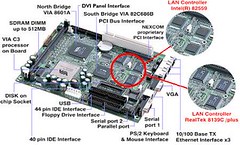Well, it's
Official. The Zaurus is dead.
We'd actually been expecting this for quite some time. "We" being an Engineer buddy of mine and myself. Way back in the day, we both worked at a research institute at a University that had strong ties to the Japanese electronics market. One day, a VP of R&D from Sharp came to visit, and he bestowed upon us a developer version Zaurus - the 5000d - for evaluation.
Fast forward several years, and my buddy contacts that man, looking to offer his ideas on re-imaging the Zaurus line (now at the 3100). They apparently had a very illuminating conversation, with topics like the VP admitting that they (Sharp) had no idea what the open source community was about, or why anyone would really want the source code in the first place, etc.
Ultimately it turns out that he had moved on to be the head of the Sharp wZero3 project, and he put us in touch with the current head of the Zaurus project. My friend eventually got to talk with one of the assistants for the new head, and he was told in no uncertain terms that Sharp wasn't interested in any further investment in the Zaurus project.
I had hopefully taken that to mean that no investment beyond their existing R&D program, but it wasn't to be. The 3200 came out and that is the end of a very long and glorious ride with the Zaurus.
Now, if only Vulcan would hurry up and sell me a Flipstart, I might be able to get over the loss...



